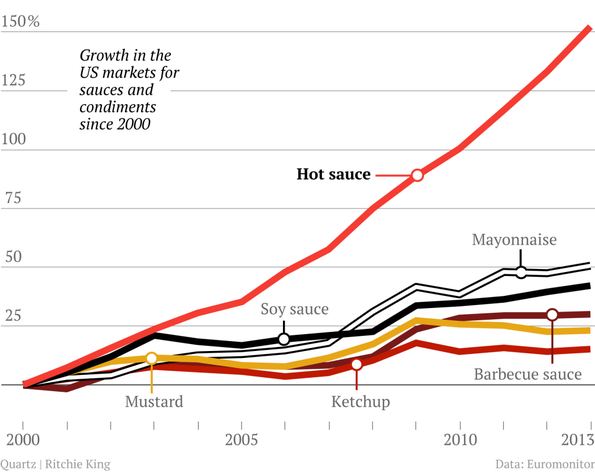Why hot sauce sales are soaringWhy hot sauce sales are soaring
American palates are growing more adventurous, and with them, hot sauce sales. Will spice experience unbridled growth?

Mayonnaise and white bread no more! American palates are growing more adventurous.
Given the cult following behind the likes of Cholula and, more popularly, Huy Fong’s Sriracha, it’s no surprise that hot sauce is booming in the United States. Heck, there are even cheeky quizzes that indicate your addiction level to the green-topped “rooster” sauce (lamentably, I scored high as the “Dark Lord of Sriracha.”)
So mayo, out. But what of the old ketchup and mustard ballpark standbys? Are they a thing of yesteryear? Yes, in a nutshell—they have fared much worse. According to the below graph by Quartz, both condiments flat-lined by 2009, and were surpassed by barbeque sauce in 2010.
In contrast, hot sauce grew a meteoric 150 percent since 2000. Last month's Fancy Food show in San Francisco illustrated the trend, as troves of hot sauce manufacturers exhibited products ranging from jalapeno-spiked sauces to fiery chili pastes.
Though Quartz attributes the rise in hot sauce to an influx of immigrants from regions whose cuisine is traditionally rife in spices (India, Asia, South America), I think Americans are simply growing more exploratory with their food choices. It may be the rise of foodie blogs, a growing Food Network eat-anything culture, or even the diverse Millennial population. But given the growth, it's safe to project that this spicy trend won't slow any time soon.

About the Author
You May Also Like





